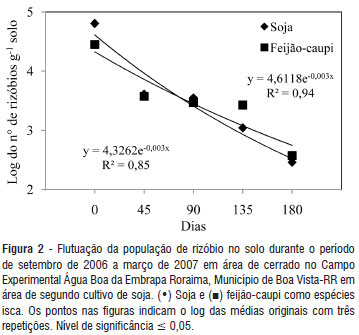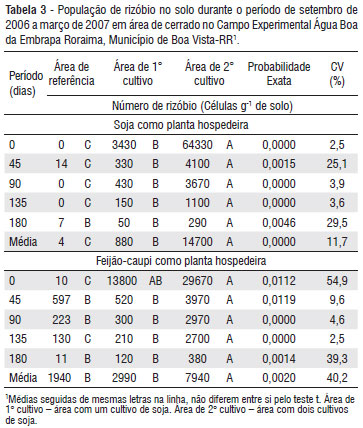The biological nitrogen fixation in legumes is performed by a group of bacteria known as rhizobia. The survival of these bacteria in soils is affected by several factors, such as temperature, drought and soil fertility. This study was performed to evaluate the dynamics of rhizobia in the soil after soybean cultivation and during a dry season in the cerrado of Roraima. Three areas were sampled: i) native cerrado as reference; ii) an area previously cultivated with soybean for one season; and iii) another one cultivated for two seasons also with soybean. The soil was sampled at a depth of 0-10 cm in five times (0, 45, 90, 135 and 180 days) during the dry season (September 2006 to March 2007). The rhizobial density in the soil was evaluated by the most probable number method with infection of soybean and cowpea plants. It was observed very low number of soybean nodulating bacteria in the reference area, but a high density, of up to several hundred rhizobia capable to nodulate cowpea was measured in this same area. Cropping of soybean with inoculated seeds increased rhizobial density evaluated by both trapping hosts. In cropped areas, an intense reduction of rhizobium density was observed just after soybean harvest, and this reduction continued until the end of the period of evaluation. It was concluded that soybean cultivation increases the density of rhizobial in the cerrado soil; however, this density is drastically reduced, during the dry season, by 99% at the end of the dry period.
Glycine max; Vigna unguiculata; nodulation; most probable number





